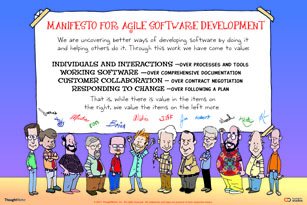But the positives were so strong, relative to my previous experience, that it took me 5 years doing full-on agile to even start to see & articulate & connect the problems.
- Very few people can pair that much. My job was essentially talking for 8 hours a day.
- Many people can’t do a 9-6 fixed schedule. Parents, in particular, because no daycare place stays open past 6. This is ultimately why I left Pivotal.
- Full-time pairing is hard across time zones. Having everyone in the same time zone is often unrealistic.
I’ll give you a quick example.
- focus
- avoiding silos
- code review
- onboarding
- cross-training
- fewer rabbit holes
There are other ways to get all those things.
Let's start with "very few people can pair that much."
They're all usually on the downward side of one or more _power dynamics_ in their pairs.
The power I'm talking about here is simply the power to _ignore the dynamic completely_.
* junior - senior
* "wrong" background - "right" background
* learning developer - teaching developer
* feminine - masculine
* people of color - white folks
* women & other genders - men
Nope. As you may have figured out by now, power dynamics are something EVERYONE has to keep in mind.
What does "keeping them in mind" mean?
How do we neutralize the ones we're on the upper side of?
What does this have to do with homogeneity in agile? (I promise we're getting there)
Let them speak first. Be mindful of interrupting. Catch your reactions to their words on the way out, & do a post-processing pass to consider whether your reaction is due to the dynamic.
The list above is a good start, but there are many others: national origin, native language, external signs of religion, editor preference...
There's also preferred language (woe be to you as a PHP developer coming into a shop that does basically anything else), & location in the stack (HTML/CSS is less prestigious).
When this is true, pairing is amazing. When it's not, it's a nightmare.




And then, of course, by having the originators EVEN TODAY deny that agile's assumptions aren't true for everyone.🙄
But which is the standard form? The one men have an easier time with.
We don't need to totally bin them, but we do need to reimagine them.
I'll close with some reactions to my initial foray into this, which all explicitly or implicitly say I'm fabricating these differences (which science confirms):










